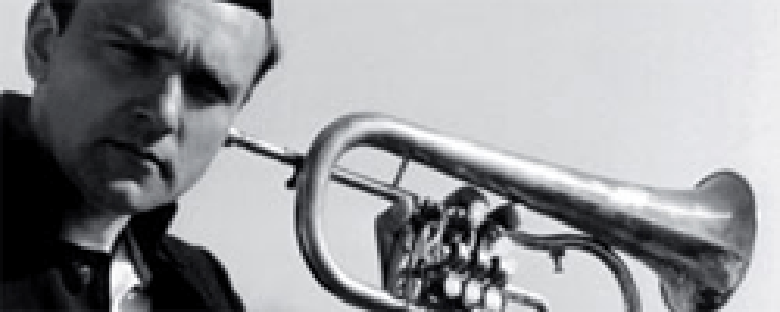Reviews
Intimní Osvêtlení
Ivan Passer
Czechoslovakia, 1965
Credits
Review by Ian Johnston
Posted on 27 September 2006
Source Second Run DVD
What characterises Czech films of the early sixties is above all a feather-light airiness and an openness to expressing and exploring with wit, humour and sympathy the twists and turns, the surprises and inconsistencies of human behaviour. Even a film as thematically weighty as Jan Nemec’s Report on the Party and the Guests conducts its allegorical critique of the political apparatus of the day with as much whimsy and breeziness as the apolitical humanism of Forman’s Audition or Loves of a Blonde. And perhaps no film sums up the spirit of the Czech New Wave as Ivan Passer’s light and breezy masterpiece, Intimate Lighting.
This was the only feature film that Passer made in his native Czechoslovakia before the Soviet crushing of the Prague Spring forced him into exile and a career in the West characterised by a dispiritingly erratic succession of films, never to attain the level of his marvellous beginnings. Indeed, in the interview on this Second Run disc, Passer seems rather to idealise the production conditions that existed under a repressive Communist regime—the lack of commercial pressure and the support for a genuine art cinema. This is in spite of the fact that Intimate Lighting — no doubt, somewhat to the surprise of most viewers today — remained banned for twenty years.
There’s very little story as such—more a series of sketches around a situation. Bambas is violinist in a small provincial orchestra, and his old friend Petr comes to visit, with his pretty girlfriend in tow, as guest soloist. The film covers the initial arrival at Bambas’ house; a funeral and wake at which Bambas and his father perform; and the events back at the house: a family meal, a rehearsal, Bambas and Petr’s late-night carousing, and the morning after…
The delight of Passer’s film is its sense of catching the meandering vagaries of everyday life. The camera will follow a character wandering off from the “story” at hand, such as Petr leaving Bambas and his father before the funeral to then discover a bikinied woman working in a field, or Petr’s girlfriend Stepa and her charming encounter with a lisping village idiot on her wanders around Bambas’ house.
This mood of the film, its willingness to veer off into unexpected directions and its openness to the inconsequential, is established from the start. Bambas pauses in leading his guests Petr and Stepa up the path to his house in order to pick some gooseberries for Stepa, samples a couple for himself, then stops perplexed as he can’t find any more. Here is the narrative structure in miniature, where the storyline will be diverted to a momentary attraction, which will then lead nowhere in terms of plot. What’s paramount is consolidation of mood and character.
Few films can attain Intimate Lighting’s level of realism, the quality that we recognise from our own everyday experience of the shifting, uncertain focus of any scene. So, at the lunch at Bambas’ house on the arrival of his guests, there’s no primary “point” to the scene, as we move between Petr and Bambas discussing music, Stepa playing peek-a-boo with one of the kids, the wife sitting off to one side changing the conversation at will, and the grandmother standing in the doorway watching. In this way, all through Intimate Lighting we have freshness, vitality, constant surprise, and the sense of being absolutely true to life.
At the end of the one day of meandering incidents that the bulk of the film follows, Bambas and Petr sit up late getting more and more drunk and speak to Intimate Lighting’s major theme, a theme that has lain beneath Passer’s light touch and the twist-and-turn of incident: the sense of personal failure, entrapment, and a feeling that one’s options in life have been closed off. Bambas talks of his dream of burning down the house (the unfinished house that has been in a slow process of construction over several years and which he has literally paid for a single brick at a time) and urges that they take their instruments and head off “into the world.”
There follows a shot of the two of them (Petr still in his pyjamas) in silhouette, wandering the night road, music cases in hand. But the illusion of this drunken break for freedom is underlined by the following shot of another silhouette, of the hen on top of Bambas’ car (an image which has been the centerpiece of an earlier comic scene that reflected the chaos of Bambas’ domestic life and his own charming inefficacy); after which, Bambas closes the gate, as if finally closing a gate on his dreams.
The film’s final scene asserts an allegorical reading of all that has gone before. Take it as a general statement on the human condition, if you will; or, most directly, as the final comment on the fate of these characters, living out their lives in a provincial backwater, trapped, their ambitions compromised, their hopes blighted; or follow the presumed line of the Czech authorities (otherwise, why ban this film until the fall of Communism?) and interpret it as a subtle but devastating critique of the regime in power.
In the early morning, the family and their guests gather on the balcony to drink eggnogs which remain stubbornly stuck in their glasses. They all stand up, glasses tipped upside down, heads tilted back, as frozen in their tableau as the eggnog itself:
We’ll be standing here like this until Judgment Day!
A bit of patience, that’s what we need.
So, the film’s final shot holds them frozen like this, at a distance, waiting for something to happen—or knowing that nothing will.
We don’t do comments anymore, but you may contact us here or find us on Twitter or Facebook.



